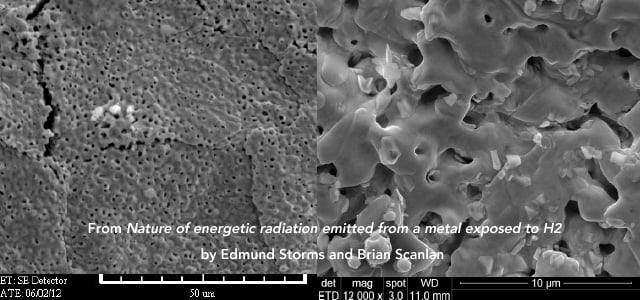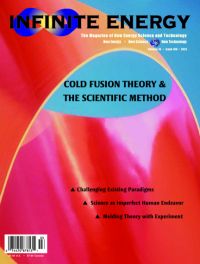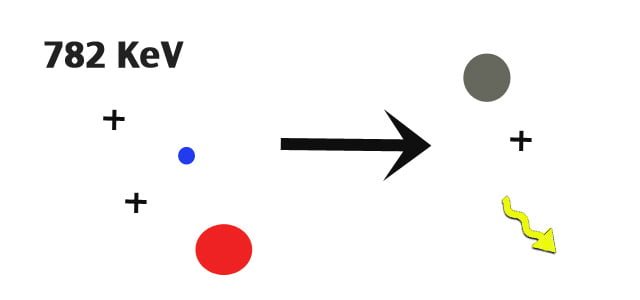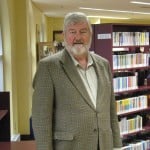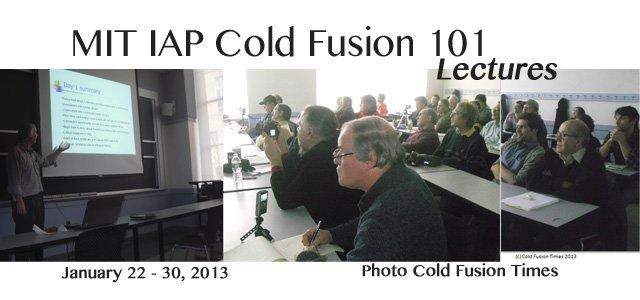Read original article by Marianne Macy on Infinite-Energy.com.
Hagelstein and Tanzella’s Vibrating Copper Experiment
by Marianne Macy
MIT’s Prof. Peter Hagelstein, longtime contributor of cold fusion experimental and theoretical work, knows a thing or two about X-rays. In the 1980s he was a 24-year old-prodigy when he worked for hydrogen bomb creator Edward Teller at Lawrence Livermore Laboratory in what became known as the Strategic Defense Initiative— Star Wars. Hagelstein had discovered a way to make a nuclear X-ray laser that would become the basis for the program, calculating that the electrons of a metallic atom, pumped repeatedly from an exploding bomb, could produce scores of X-ray photons. His work postulated that metals with a higher atomic number on the periodic table such as gold, mercury, platinum and bismuth would have shorter wavelengths and make for a more energetic laser. After successful early tests, Hagelstein became one of the chief scientists of a program that essentially was based on his idea. He was the recipient of the E.O. Lawrence Award for National Defense from the Department of Energy in 1984, and at the time was the youngest recipient of that honor.
Dr. Alexander Karabut, who passed away on March 15 and whose background is detailed in a memorial obituary, spent years studying and working on X-ray effects. David Nagel, a physicist and former Naval Research Laboratory (NRL) Division head who himself has a patent on a system for studying the effects of soft X-rays for lithography, considered the work by Karabut and his colleagues at LUCH to be very important. “The center of gravity of Karabut’s work is transmutation and radiation measurements. Karabut’s X-ray measurements got attention in the U.S. because of the interest of people like myself and Peter Hagelstein, who have a background of experience in X-rays.”
Nagel credits Karabut with making a tremendous contribution to this area of research. “I found 20 papers on ISCMNS and on LENR-CANR.org [search Karabut] there are 33 papers by him covering this area. He produced a large body of information.”
Alexander Karabut’s glow discharge experiments are considered some of the most significant in the field. In 2007 he was awarded the Preparata Medal for this work. One of his longtime LUCH colleagues, Irina Savvatimova, said at his memorial that she and Karabut had published their first paper on cold fusion shortly after Fleischmann and Pons (F&P) had. She said they had observed the effect of excess heat long before F&P but had not paid attention as they’d been more focused on transmutation.
Karabut’s work in X-ray effects is significant on many fronts, including the “fastest recorded evidence from LENR experiments of any kind,” as David Nagel put it. Recent work confirms that Karabut did indeed produce soft X-rays, which is a very big deal. It’s important in terms of understanding nuclear mechanisms and making related technology work. It’s a great scientific breakthrough with significant potential for industrialization.
RESEARCH TO UNDERSTAND KARABUT’S EXPERIMENT
An update on the results of a collaborative research effort between MIT’s Prof. Peter Hagelstein and SRI International’s Dr. Fran Tanzella will be presented at ICCF19 in Padua, Italy. The experiment studies the possible up-conversion of vibrational energy in order to understand Karabut’s X-ray effects, not with glow discharge but with a vibrating copper foil. One of the most striking things about the results is that the very different thinking, backgrounds and disciplines of the participants—an unusual amalgam of disciplines—when put together have resulted in a new kind of experiment.
Tanzella explains that for starters, he and Hagelstein were looking at the problem through a different lens. “Physics and chemistry have a difference of nomenclature,” Tanzella says. “Physicists think of all low energy radiation as X-ray’s regardless of its source. To a chemist, a photon ejected from an atom with low energy is an ‘electronic X-ray,’ while a low energy particle ejected from the nucleus is a ‘nuclear X–ray’ and they are considered different phenomena. Classically excess angular momentum from a nuclear reaction expresses itself as a photon (i.e. a gamma ray). Peter’s hypothesis, the last step of which is present in some LENR theories, is that when a nuclear reaction occurs inside a lattice the excess angular momentum interacts with that lattice’s vibrations. Therefore instead of yielding photons (gammas) it leads to a vibrating lattice, which thermalizes resulting in heat with no ionizing radiation. So Peter thought of vibrations exciting nuclei to get low energy gammas, and calling them X-rays. (We don’t argue over the different nomenclature anymore). Peter’s lossy spin boson model theory deals with massive up-conversion and down-conversion. In high temperature fusion, deuterons normally fuse to make n+3He and p+t, but with low probability can make 4He plus a gamma. So in Peter’s theory for LENR to occur, that nuclear energy needs to be down-converted to phonons. If you vibrate a lattice you get heat but not ionizing radiation. The way I view our experiment is we are looking at the final step in the LENR process backwards: we’re exciting phonons mechanically, and which interact with nuclei to give off low energy gammas as X-rays. In Peter’s model the energy goes from the nuclei to the vibrations for excess heat production, where here the idea is to go the other way and start with the vibrations to produce nuclear excitation. In the models the two processes are just two sides of the same coin.”
Despite, or perhaps because of their different perspectives, they came up with an experiment both were happy with, after some rounds of refinement.
THE KARABUT INSPIRATION
The person whose work they were springing off from, Alexander Karabut, was coming from yet another world entirely. Hagelstein, who had traveled to Russia in the 1990s to see Karabut’s work in the early stages, explains that “Karabut is an experimentalist, not a theorist or someone involved in quantum mechanics. He lived in a last century world. His world is one of power supplies, discharges, working with others on hardware to do some diagnostics on it, and generating lots of data that didn’t make any sense but that he tried to understand.”
Hagelstein mused that he tried repeatedly to tell Alexander Karabut how influential the Russian’s work had been on his thinking and the very direction of Hagelstein’s work. Karabut had asked Hagelstein to collaborate with him on a book, a book that Hagelstein would still like to complete if Karabut was able to make enough progress to leave a manuscript. Hagelstein hopes his appreciation of Karabut had came through to him. This was not just a matter of their method of communication with each other. Neither spoke the other’s language so they were using Google Translate on emails, with linguistic idiosyncrasies indubiously causing major pieces of communication to fall between the cracks. Both men were very busy, Hagelstein reporting that his last term’s work at MIT was “the worst I’ve had in twenty years” and Karabut was working in a new space in Moscow he had put together. Hagelstein also attributed any glitches to their very different life views.
“I think the ideas I’m pursuing are not the most obvious ideas. To think what I am suggesting is plausible requires suspension of disbelief, or someone understanding how coherent processes in quantum mechanics works,” Hagelstein says. “I am going to imagine from his point of view that he would think I’ve lost my mind—which would be a natural reaction of an experimentalist interacting with a theorist like me!” Hagelstein laughs. “He wouldn’t appreciate the amount of ongoing effort to untangle what he did. But Karabut’s work has provided the foundation of pretty much most of the major issues I’ve been working on since 2011. I’ve come to view his experiment as seminal. If you say the Fleischmann-Pons experiment is Number 1 in all this business, I’m of the opinion that his collimated X-rays, if it is not Number 2 then it is in the top five.”
Hagelstein and Tanzella set out to reproduce the Karabut effect. . .not with a glow discharge, as Karabut did, but with vibrating foils and resonators. Would it be possible to produce soft X-rays that were collimated? The distinction being that “soft” here means X-rays in a region of the electromagnetic spectrum. In the X-ray region, the radiation ranges from hard and energetic which will penetrate surfaces (like your broken arm) all the way down to a region—soft—that will not penetrate much material. It has to do with wavelength. The collimated part is more like a laser than a light bulb. If an electric bulb scatters light in all directions, a collimated beam is in a narrow format like a laser. Ordinary X-rays are usually born going in all directions but Karabut found the X-rays from his source were more like a laser, directional.
Hagelstein takes this as extremely significant. If the X-rays are directional, then there has to be a pretty fundamental reason for it. Phase coherence among the emitters could result in collimation, but then how could this phase coherence come about? Hagelstein’s conclusion was that the most likely way it could happen would be through up-conversion of vibrational energy to produce phase coherent nuclear excitation. If so, this would bring Karabut’s experiment into alignment with mechanisms Hagelstein thinks are involved in producing excess heat in the Fleischmann-Pons experiment.
So Hagelstein and Tanzella set out to reproduce the collimated X-ray effect that Alexander Karabut first saw back in 2002. Hagelstein says, “Even before 2002 there were precursors to the effect. Karabut saw X-ray beamlets at higher energy. Karabut was convinced he had made an X-ray laser back in those days.”
HISTORY: BACK TO THE USSR
Peter Hagelstein visited Russia’s LUCH Institute in 1995. In the late 1980s to early 1990s, physicist Yan Kucherov was the head of a group at LUCH that included Alexander Karabut and Irina Savvatimova. Kucherov had already emigrated to the United States but stayed in touch with his colleagues. David Nagel, then at NRL, said he wished for a more comprehensive understanding of what LUCH was like. He believed the institute functions like the United States’ Lawrence Livermore, Los Alamos and Sandia National Laboratories. “You can see they did lab work on materials and systems that have to do with nuclear power and propulsion,” Nagel says.
Hagelstein relates that at MIT they tried to replicate the Karabut, Kucherov and colleague’s experiments. A version of their experiment was constructed and shipped to MIT, where Lou Smullin and Peter Hagelstein worked on it for four years altogether. During this effort, travel was arranged for Hagelstein to go to Moscow to visit the LUCH Institute. “I got to see Karabut there. I witnessed the discharge,” he says. “I asked him a lot of questions. We worked to understand the large voltage spikes in their system better, and for me to get better acquainted with the experiment.”
Hagelstein notes, “In those days we focused on the claim of gamma emission. Kucherov and colleagues had claimed to see gamma emission around 129 keV. The goal of the experiment was to set things out, put a gamma detector on it and see if we could see the same thing. After a very long time and a huge amount of work we saw exactly what they saw. The headache was that the gammas at 129 keV were statistical noise.”
One researcher Hagelstein knew had experimented with glow discharges and tried to do an experiment related to Karabut’s collimated X-rays. “That researcher, someone with an awful lot of experience with glow discharge experiments, failed,” says Hagelstein. “I scratched my head thinking, why? And then I thought, well, obviously Karabut had these sharp voltage spikes, sub-nanoseconds 50 kV or higher in sub-nanoseconds. When I say 50 kV or higher, he was claiming up to a megavolt. That was one of the reasons why I went to Russia, to see these voltage spikes with my own eyes.”
In Moscow, Hagelstein found the ingenious nuts and bolts experimenter at work. “Karabut set up this insane resistance ladder voltage divider. He had like 100 resistors stacked up! So he was able to get a sufficiently low voltage across one of the resistors and so he could measure it without frying the electronics. He claimed his measurements were consistent with getting well over 100 kV out of his voltage spikes. They were shorter than he was able to measure with the scope. He was of the opinion they were sub-nanosecond. We looked for them in our system, which was supposed to be a copy of his. The discharge hardware was an exact copy of Karabut’s system.”
“Although,” Hagelstein continues, “what we had at MIT was a twin to their system. . . except for the electronics. We built our own electronics, different from Karabut’s electronics. We saw voltage spikes but 10, 15, 20 kV also shorter than we could measure, they were under a nanosecond but not of the amplitude that the Russians were getting. I am of the opinion that these voltage spikes are connected with the collimated X-ray emission and electron emission effects. The voltage spikes would only be present if you do something interesting in your drive electronics—for example, he had inductors. When I went to Moscow he said at the time he was using an inductive ballast…but I think to understand his experiments you have to understand the electronics and that is going to play a key role in the effort of sorting out what it is he did.”
So it was that Peter Hagelstein, upon learning of Karabut’s death, sent word to his Russian colleagues that it could be important for Karabut’s electronics to be preserved. “I am of the opinion that the key to Karabut’s experiment glow discharge experiments was in his electronics. He had a report where he documented some aspect of his electronics for a system that was similar to his glow discharge which had some inductors on the other side of power transistors, which is an unusual thing to do. His glow discharge showed very short, high amplitude voltage spikes, which is very unusual for glow discharge. In my view it would be connected to his electronics. If his electronics or notes exist it would be a tremendous loss for them to be to discarded so we don’t figure out his electronics.”
Hagelstein notes, “One thing I had hoped to do in connection with writing the book, was that I was going to twist his arm to write out a circuit describing his driving electronics so it would be there in black and white for the world. I think someone technical who knows about circuits should make an effort to look through his notes and electronics to make a diagram of his driving circuit. If that is done then it would be possible to pursue his life research. If it gets lost then no one will ever be able to go back to what he was doing.”
Hagelstein offered that he would host the experiment at MIT in the future when he could raise the resources and manpower to do it. “It would be nice if his experiment were preserved because it’s such an important and fundamental experiment, but what’s important would be if someone could recover the circuit diagram in as much detail as physically possible; that’s what would make a giant difference to me. There are two separate issues. One is the circuit diagram, the other is the preservation of the experiment. That should be talked about, to make a home for it, possibly in this country—at the University of Missouri Kimmel Institute or LENR research director Rob Duncan’s center at Texas Tech. Our place in MIT is a possibility. In Russia, one question is if Roussetski and company could take it over. In France, researcher Jean Paul Biberian might be a candidate.”
TRYING TO UNDERSTAND KARABUT: THE SRI/MIT Experiment by Hagelstein and Tanzella (The “Hellish Beast”)
Tanzella and Hagelstein agreed on the importance of Karabut’s X-ray effects and the great scientific and practical industrial potential. “We all agreed it was not an X-ray laser,” Tanzella states. “An X-ray laser needed a population inversion, which was thought impossible under the conditions of the experiment.”
At SRI, Hagelstein and Tanzella were faced with the need to make an experiment that was inspired by Karabut’s experiment but would be executed in a way that was completely different. They recognized that Karabut’s glow discharge was sufficiently complex that it was unlikely they would be able to build something to replicate what he had done because they would need his circuits. “In my view, his glow discharge is a hellish beast,” Hagelstein says. “Karabut and the LUCH Institute had a lifetime of experience with glow discharges before he built and worked on it. There was no way I wanted to get into a program where we’d have to basically become experts like Karabut. The idea was that if Karabut’s ideas worked it would work in a certain way. I have models and the models say that the only way Karabut’s model would really work would be if one of these voltage spikes on the cathode produced vibrations. The only way it would work would be, if there was mercury on the surface would we get the X rays.” Hagelstein had noted earlier that 201Hg is special among nuclear because it has the lowest energy transition (at 1565 eV) from the ground state of the stable isotopes.
Hagelstein suggested that instead of building Karabut’s glow discharge system, which looked like a real beast of a problem, they should attack the interpretation and build something simpler that would just vibrates some cathodes. It would be easier to explain to colleagues later on.
Tanzella suggested making them out of copper because mercury sticks to copper very well. Hagelstein explains, “If we got it to work we could put mercury on the surface and just watch for X-rays. That’s what we did. We got charge emission signals. We also got X-ray signals, which we initially thought were Karabut’s X-rays. When we went back to try to understand the data, it was clear. . .We had been fooled. Karabut didn’t get fooled because his diagnostics were very good and redundant, and he had taken the time to study the effect for many years. He had four different ways to test for his X-rays. But we were only using one X-ray detector. I am of the opinion our X-ray detector got fooled because of the large amount of noise present in the system. If real X-rays had been there we couldn’t tell the difference between it and the noise. We would like to follow up and try again either at SRI or MIT. At MIT we haven’t gotten that far yet but we are definitely interested in the X-rays.”
In that Hagelstein has been following the Karabut effect since the 1990s, his appreciation for SRI and Fran Tanzella is great. “Let me honor my friend Fran just a bit here,” he says. “When I approached Fran and SRI and said I’d like to set up a controlled Karabut experiment it was such a contrast to what would happen if I’d tried to do it here at MIT, where if I said, ‘I want to vibrate copper and see if X-rays come out,’ the door would immediately slam shut! But at SRI they said, ‘let’s just go do it and set it up!’”
“We talked about what we needed to do,” Tanzella says. “We need to excite a thin piece of metal. I got copper foils and cleaned them up. We made a simple apparatus. You can find details of this in our recent paper with figures and pictures. We put things together with steel washers. We spent months trying to make it work. The project proceeded in three phases. Peter wanted to find resonance by performing AC impedance experiments. We started that path but found that the noise was large and the signals too small to see in the presence of so much noise.”
Tanzella explains, “We then decided to make a solid cell that would hold the foil tightly, and resonate with the foil. We did that and got a large driver, which was a copper block, large so the acoustic energy wouldn’t go there. We brought in a collector plate in the back side of the resonator foil. You have a driver close to the foil so that it can drive it, and waves from the foil couple to the resonator. You have a collector plate to be able to measure electrons or any current. We were hoping they were electrons. The signals corresponded to negative charges, so we assumed they were electrons or negatively charged air molecules. We had an oscillator and linear amplifier so I could drive oscillations with high voltage and MHz frequencies. There were resonances in the signals. Peter thinks that the X-ray emission in the Karabut experiment is due to the 1565 eV transition in a mercury isotope, 201Hg. He recalled during his visit that they had at one time been using an old mercury-based diffusion pump. The amount of mercury needed on the surface to produce the emission was very small, and probably consistent with normal levels of ubiquitous mercury contamination. So we wanted to get copper vibrating so it could excite the mercury on the surface. Copper amalgamates with mercury so my colleague, Jianer Bao, deposited a thin layer of mercury on our copper foil. And we looked to see X-rays when we excited this coated foil. We saw charge emission signals that seemed to be correlated with the vibrational resonances. (If we let the foil sit for some time the mercury diffuses into the copper—it amalgamates—and the signals on the X-ray detector diminish, which we had attributed to the mercury atoms no longer being on the surface.)”
Tanzella notes, “Peter pulled out his credit card and bought a $7500 X-ray spectrometer. It fit in our resonator. We performed the excitation experiments with and without mercury. We saw something (a stronger signal in the X-ray detector) with mercury present. Because these results were potentially so important, the issue as to whether the signals were real or not came to be an issue. Peter decided to go through every scrap of data that had been taken, and we had to re-run all of the X-ray calibrations since there seemed to be some uncertainty in the calibration that had been used. Peter ended up not being convinced that the signals on the X-ray detector were not real because they didn’t seem to be absorbed by the Be window at the front of the detector. The X-ray detector was responding to something, but not to X-rays.”
Tanzella continues, “We needed to make a decision about presenting the charge emission results at ICCF19, since a charge emission effect correlated with acoustic vibrations would be big news and important to the community. At MIT some experiments had been started, and large amounts of RF noise was found in all of the detectors. So Peter wanted to see the charge emission experiment pass a ‘gold standard’ test to be sure that the charge was real, and not electrical noise. The idea was that RF noise might confuse some electronics, but Peter felt that a simple capacitor couldn’t be fooled. If the current was real, then it would charge a capacitor, and we would have much more confidence in the current measurements.”
So, Tanzella set up the “gold standard” capacitor measurement and took data. He found that the capacitor charged up when the driver was on, at a rate consistent with the earlier measurements. Also, the rate of charging was low off of resonance, and high on resonance, backing up the earlier electrometer measurements. With a successful “gold standard” test in hand, the abstract was e-mailed off.
Continued discussions about the severe noise problems in the experiments at MIT prompted Tanzella to repeat the “gold standard” capacitor test. This time, there would be no real-time monitoring of the capacitor. It would remain unconnected from the rest of the world (other than the collector and ground), and sampled only when the big high frequency and high voltage drive was off. This time no voltage could be seen on the big microfarad capacitor. The measurement was repeated with a small picofarad capacitor, and a signal could be seen. This signal was seen to grow roughly linearly with more running and subsequent interruption type measurements.
Hagelstein notes, “A conclusion from this test is that all of the earlier charge emission measurements were called into question as most likely being due to noise. Critics of the field have speculated that all positive measurements of excess heat and other anomalies are nothing but artifacts, so doing more tests to be sure of a result is always important.” Hagelstein has observed that if the charge in this new test were real, it would be very important. He says, “Unfortunately, we don’t know very much about this new version of the experiment, whether the result is an artifact or not, or whether the charge has anything to do with the vibrations.”
So, the question could be asked, after going through all of this, how do the results connect with Karabut’s experiment, based on all that has been learned?
Tanzella says, “I view the importance here is that you can excite phonons and show nuclear excitation as a way to prove LENR nuclear excitation relates to phonons to get heat without gammas.” Tanzella said that if successful, this research “could validate the concept that you can have nuclear reactions without ionizing radiation.”
Hagelstein has observed philosophically that knowing what doesn’t work is important, because it allows you to focus on things that have a better chance of working. However, he says that the results so far have been extremely valuable to him in his interpretation of the Karabut experiment, and of the models he has been working on. He explains that one of the big headaches in the theory end of things has been to find a regime in the models that might allow for an X-ray emission effect that involves a small sample. For years the numbers just wouldn’t work, even after repeated tries. Last year he found an obscure regime of the model where it was possible to have the numbers work, but this corresponded to a very strong coupling regime of the model only available if coupling to transitions with negative energy states of the nucleus were responsible for the fractionation. Not a regime that he was happy with, and one that would not go over well with colleagues. But a regime that the model would be forced into if one concluded that a small foil had the power to up-convert lots of small quanta to make 1.5 keV X-rays.
According to Hagelstein, they “did drive small samples pretty hard, and when driven hard they didn’t seem to do very much (although with so much noise present it has been hard to be sure).” Tentatively the conclusion he is coming to is that a revision in his interpretation of the Karabut experiment is needed. In experiments by Kornilova and Vysotskii and coworkers, a 3 mm thick steel plate near a high pressure water jet has been seen to produce X-ray signals on film under conditions where the X-rays are collimated. Peter thinks that this effect is closely related to Karabut’s collimated X-rays. He says, “Steel is interesting in that it contains 57Fe, and there is a nuclear transition at 14.4 keV in 57Fe that is like the 1565 eV transition in 201Hg. The cathode holder in the version of the glow discharge experiment that we worked with at MIT had a very heavy steel holder that could be interpreted as an acoustic resonator. Strong acoustic excitation of this resonator, resulting from the very short and very high voltage spikes that occur in Karabut’s discharge, might be responsible for the up-conversion of the vibrational energy. If so, the model would probably be much happier with it in the normal regime of the model. And if so, we could test it, by working with a big steel resonator instead of a copper resonator.”
So, a work in progress. Hagelstein and Tanzella are advancing their ideas about Karabut’s collimated X-rays by investigating a physics experiment which they think is closely related.
WHAT THE FUTURE HOLDS
Peter Hagelstein and his collaborator Irfan Chaudhary produced a paper last year that focused on generic issues of the Karabut experiment and Hagelstein’s model. This paper discusses the model in the different regimes, trying heroically to connect the model to experiment under the assumption that the small cathode is up-converting the vibrational quanta. Hagelstein notes, “The ultimate conclusion is that a connection is made only if the system operates in an anomalous regime, which is interesting but not appealing. These days I am moving to a different interpretation that says the large steel cathode holder plays a major roll. The thought is that the model will be much happier connecting with experiment in the normal regime. This will make life much simpler, as the normal regime is much better understood, much easier to analyze, and behaves qualitatively much more like the experiments. One possibility is that the Fe-57 transition and the few other long-lived low energy nuclear transitions might be important for up-conversion in the eV-keV range, while more common long-lived transitions at higher energy are important for the down-conversion in the MeV regime.” In all of this the Karabut experiments, Hagelstein claims, “Have been key in my thinking and that of some of my associates as well.”
What is the potential of a working technology coming out of the Karabut-inspired experiments Hagelstein and Tanzella are doing?
“Let me back up a bit,” Hagelstein responds. “Some years ago, when Karabut first found this he wondered how efficient it could be. So he tinkered with it, trying to make it as efficient as possible. He had conversion efficiency of 20% from input electrical energy to output collimated X-rays. That is wild. It is amazing. Some of my colleagues have explained to me that this would be a candidate for commercialization. I don’t think you’d like to do it with glow discharge. Nothing wrong with it. If you debug it that would be useful. But I was thinking if we could get surfaces to be vibrated and give out collimated X-rays if this happened efficiently that would be a ridiculously useful technology. One of my friends who is involved with X-ray lithography said that would be the cat’s meow for a source for lithography for the semiconductor industry. Whether or not it turns out to be true, it conveys how important X-ray sources are in this day and age.”
—Marianne Macy and Infinite Energy will continue with this reporting, with interviews from Alexander Karabut’s colleagues from LUCH detailing the history and future of related work there.
Read original article here.
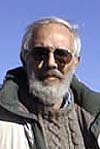 Nuclear chemist and former Los Alamos National Laboratory rocket scientist Dr. Edmund Storms has been researching cold fusion/LENR since 1989 and talks with Ruby Carat on the Cold Fusion Now! podcast about this new area of science founded by Drs. Martin Fleischmann and Stanley Pons.
Nuclear chemist and former Los Alamos National Laboratory rocket scientist Dr. Edmund Storms has been researching cold fusion/LENR since 1989 and talks with Ruby Carat on the Cold Fusion Now! podcast about this new area of science founded by Drs. Martin Fleischmann and Stanley Pons.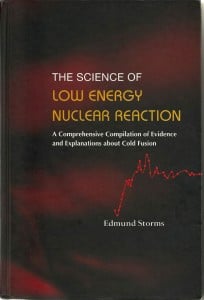 Edmund Storms has written over a hundred papers and several surveys of the condensed matter nuclear science field, including books The Science of Low Energy Nuclear Reaction, a survey of the experiments and theories of the field through 2007, and, The Explanation of Low Energy Nuclear Reaction, A Comprehensive Compilation of Evidence and Explanations about Cold Fusion, describing the top contenders for a LENR theory, as well as providing a new model of the reaction derived solely from the physical evidence.
Edmund Storms has written over a hundred papers and several surveys of the condensed matter nuclear science field, including books The Science of Low Energy Nuclear Reaction, a survey of the experiments and theories of the field through 2007, and, The Explanation of Low Energy Nuclear Reaction, A Comprehensive Compilation of Evidence and Explanations about Cold Fusion, describing the top contenders for a LENR theory, as well as providing a new model of the reaction derived solely from the physical evidence. A LENR Research Documentation Project by Thomas Grimshaw of the Energy Institute University of Texas at Austin has compiled Storms’ LENR work through 2015.
A LENR Research Documentation Project by Thomas Grimshaw of the Energy Institute University of Texas at Austin has compiled Storms’ LENR work through 2015.  Patreon is a platform for financially supporting the creative . You can pledge as little as a dollar per episode and cap your monthly spending. When we deliver, you reward the work!
Patreon is a platform for financially supporting the creative . You can pledge as little as a dollar per episode and cap your monthly spending. When we deliver, you reward the work! 

 March, 2018 — The Cold Fusion Now! podcast presents William Collis, the Chief Executive of the International Society for Condensed Matter Nuclear Science, the association that serves cold fusion/LENR scientific researchers globally.
March, 2018 — The Cold Fusion Now! podcast presents William Collis, the Chief Executive of the International Society for Condensed Matter Nuclear Science, the association that serves cold fusion/LENR scientific researchers globally.

